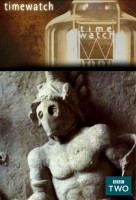Timewatch Filming Locations

Where was Timewatch filmed? Timewatch was filmed in 79 locations across United States, United Kingdom, Egypt, Poland, Germany, Bosnia and Herzegovina, Hungary, Argentina, France, India, Guatemala, Cuba, Iceland, Portugal, Malta, Belgium, Russia, Japan, Panama, Italy, Denmark, Colombia and Australia in the following places:
Timewatch Filming Locations
York is a walled city in northeast England that was founded by the ancient Romans. Its huge 13th-century Gothic cathedral, York Minster, has medieval stained glass and 2 functioning bell towers. The City Walls form a walkway on both sides of the River Ouse. The Monk Bar gate houses an exhibition tracing the life of 15th-century Plantagenet King Richard III.
St. James’s is an exclusive area near Buckingham Palace, with many fine-dining restaurant options. The Theatre Royal Haymarket and Her Majesty’s Theatre stage West End plays. Art dealers surround Christie’s auction house, while the Royal Academy of Arts draws crowds to Piccadilly. Upscale shops include Fortnum & Mason, with its posh food hall, and Jermyn Street’s tailors. St. James’s Park is popular for picnics.
Westminster is the bustling government area near Buckingham Palace. Tourists head to Trafalgar Square’s monuments and to see the changing of the guards at Horse Guards Parade while politicians mingle in Whitehall’s pubs. At the Houses of Parliament, by the River Thames, the Big Ben bell rings out from its iconic clock tower. Medieval Westminster Abbey contains the graves of historical figures such as Charles Darwin.
Bovington Camp is a British Army military base in Dorset, England. Together with Lulworth Camp it forms part of Bovington Garrison.
Bovington Camp is a British Army military base in Dorset, England. Together with Lulworth Camp it forms part of Bovington Garrison.
A shopping and entertainment hub in London's West End, Covent Garden centres on the elegant, car-free Piazza, home to fashion stores, craft stalls at the Apple Market, and the Royal Opera House. Street entertainers perform by 17th-century St. Paul’s Church, and the London Transport Museum houses vintage vehicles. Upscale restaurants serve European cuisines, and nearby theatres draw crowds for plays and musicals.
Warwick is a town on the River Avon, in England’s West Midlands region. It’s known for the medieval Warwick Castle, founded by William the Conqueror. The Collegiate Church of St. Mary has a tower with city views and a Norman crypt. The timber-framed buildings of 14th-century Lord Leycester Hospital cluster by the city’s West Gate. The St. John’s House Museum is housed in a Jacobean mansion with gardens.
Windsor is a town on the River Thames in southeast England, just west of London. It’s home to Windsor Castle, a residence of the British Royal Family. Built by William The Conqueror in the 11th century, the castle was extensively remodelled by subsequent monarchs. Public tours take in the State Apartments, which contain opulent furnishings, and paintings from the royal art collection.
Aswan, a city on the Nile River, has been southern Egypt’s strategic and commercial gateway since antiquity. It contains significant archaeological sites like the Philae temple complex, on Agilkia Island near the landmark Aswan Dam. Philae’s ruins include the columned Temple of Isis, dating to the 4th century B.C. Downriver, Elephantine Island holds the Temple of Khnum, from the Third Dynasty.
Berlin, Germany’s capital, dates to the 13th century. Reminders of the city's turbulent 20th-century history include its Holocaust memorial and the Berlin Wall's graffitied remains. Divided during the Cold War, its 18th-century Brandenburg Gate has become a symbol of reunification. The city's also known for its art scene and modern landmarks like the gold-colored, swoop-roofed Berliner Philharmonie, built in 1963.
Bosnia and Herzegovina is a country on the Balkan Peninsula in southeastern Europe. Its countryside is home to medieval villages, rivers and lakes, plus the craggy Dinaric Alps. National capital Sarajevo has a well preserved old quarter, Baščaršija, with landmarks like 16th-century Gazi Husrev-bey Mosque. Ottoman-era Latin Bridge is the site of the assassination of Archduke Franz Ferdinand, which ignited World War I.
Budapest, Hungary’s capital, is bisected by the River Danube. Its 19th-century Chain Bridge connects the hilly Buda district with flat Pest. A funicular runs up Castle Hill to Buda’s Old Town, where the Budapest History Museum traces city life from Roman times onward. Trinity Square is home to 13th-century Matthias Church and the turrets of the Fishermen’s Bastion, which offer sweeping views.
Buenos Aires is Argentina’s big, cosmopolitan capital city. Its center is the Plaza de Mayo, lined with stately 19th-century buildings including Casa Rosada, the iconic, balconied presidential palace. Other major attractions include Teatro Colón, a grand 1908 opera house with nearly 2,500 seats, and the modern MALBA museum, displaying Latin American art.
Cambrai, formerly Cambray and historically in English Camerick or Camericke, is a city in the Nord department and in the Hauts-de-France region of France on the Scheldt river, which is known locally as the Escaut river. A sub-prefecture of the department, Cambrai is a town which had 32,501 inhabitants in 2018.
Timewatch (1982)
BBC investigative documentary series noted for its new perspectives on historical events.

